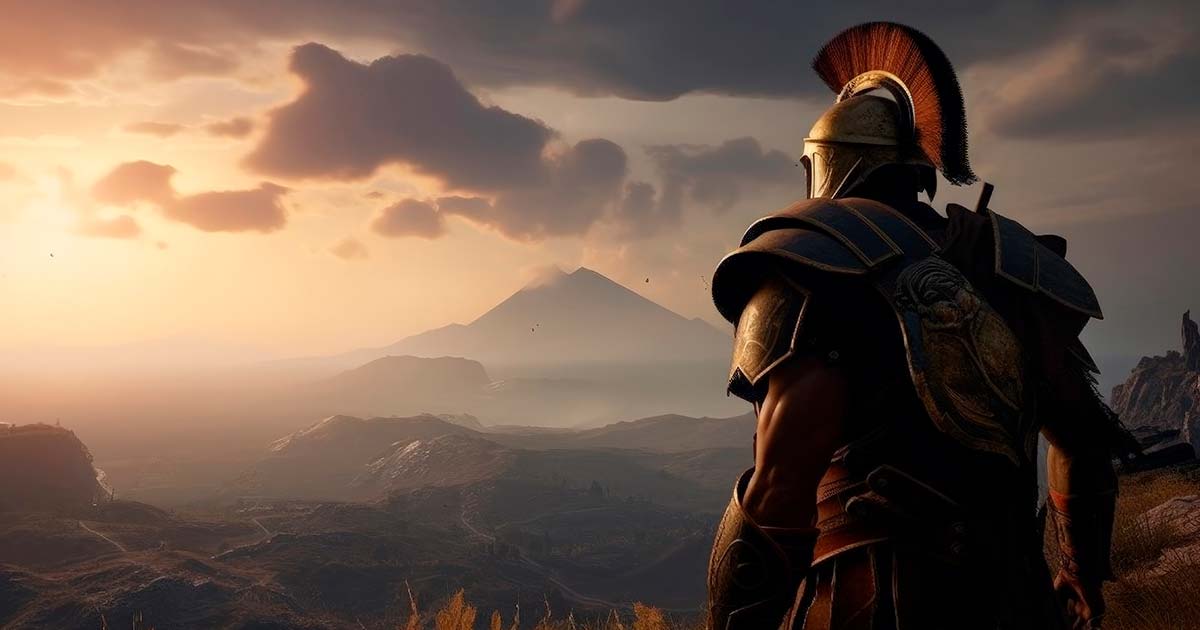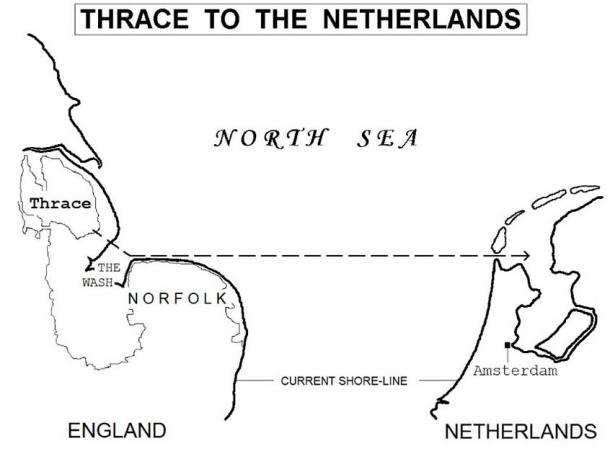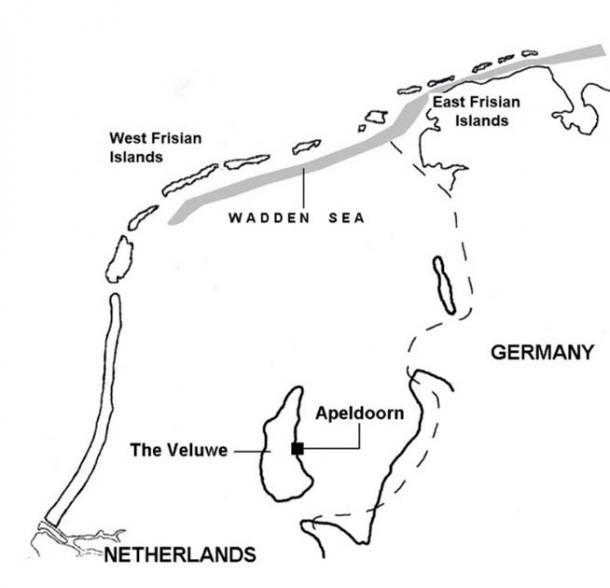The Voyage of Aeneas of Troy: Did it Really Happen?

The Trojan War is the cardinal point in both British and European history. According to the British chronicles their ancient kings and princes are descended from Brutus the Trojan , the great grandson of Aeneas of Troy. Aeneas was a Trojan prince who survived the Trojan War and led his people in exile to found a “New Troy”.
Aeneas’s voyage lasted seven years. In mythology it is said that he founded Lavinium and became the progenitor of the Romans, through his son Ascanius and the Alban kings. The Trojan War was real, but what about Aeneas’s voyage?
Incredibly, a detailed historical and geographical record of the voyage was left to posterity and has survived to this day. Scholars in the Classics know it as Virgil’s Aeneid, but it is regarded as a work of fiction. This belief is mistaken. Every facet of Aeneas’s voyage is minutely documented and the journey can be retraced in its entirety, provided that the keys to unlocking the Aeneid’s hidden knowledge are known and the geography is correct. Unbelievably, the Aeneid reveals Aeneas’s voyage to have taken place in the Western Oceans.

Aeneas and his family fleeing the burning city of Troy, with the Trojan horse in the background, by Juan de la Corte. ( Public domain )
Aeneas and the Fall of Troy
The war with the Achaean confederacy was in its tenth year when the Trojans were informed that the invading forces had sailed away. The Trojans immediately went down onto the plain to see the deserted Achaean camp for themselves. Unknown to the Trojans, however, the confederate fleet had anchored off Tenedos, unseen. By the light of the moon it sailed afterwards for Troy and disgorged its malign forces on the very threshold of the city. Earlier that day a gigantic wooden horse constructed by the Greeks before they left had been brought inside the walls of Troy. Trojans everywhere had been celebrating the end of hostilities and now the whole populace succumbed to drunken sleep.
In the darkness armed soldiers let themselves out of the belly of the Trojan horse , cut down the watchmen and opened the gates of the city to the Achaean forces. There was catastrophic loss of life, destruction on a massive scale, and the Greeks became lords of the burning city. King Priam and most of his family were killed whilst large numbers were later taken away as slaves. As Troy sinks in flames, Aeneas—a prince of Troy and cousin to Hector—gives up the fight and leads his father and son to safety, but his wife perishes in the city. At daylight Aeneas finds that people from all quarters have flocked to him in assembly ready to be conducted in exile to a new land and a new life. They spend almost a year constructing a new fleet and at the beginning of summer spread their sails to fortune.

Aeneas’ Flight from Troy by Federico Barocci. ( Public domain )
The Voyage of Aeneas of Troy and His Visit to Thrace
Virgil tells us that the first place to be visited by Aeneas was Thrace. In The Discovery of Troy and its Lost History Bronze Age Thrace was identified as the Lincoln Wolds in eastern England. Because of different sea levels the topography of this area had been transformed. There was an inland sea to the south of Thrace. This was the Hellespont, across which Aeneas sailed in exile from Troy. From Thrace Aeneas’s voyage took him to “Apollo’s Town”. It is an island that is normally considered to have been Delos. But it is not called Delos in the Aeneid. So, where was Apollo’s Town? Any voyage from this area would have to be undertaken in the North Sea and/or the English Channel but, as yet, we do not know the direction that Aeneas took when he left Thrace.
In order to solve this problem, the information contained in Virgil’s Aeneid must be put to use in the correct geographical setting. That setting was not the modern Mediterranean or the Aegean, but Bronze Age Britain . We shall see that it is only from this particular coastline that a sailor can comply with the directions given. This is because he would have to leave the shore at a time dictated by the tides and when the wind strength and direction were within tightly controlled parameters. Failure to do this would result in the ships being driven back to shore, dragged in the wrong direction, or becoming lost in the North Sea.
Sailing oceans that are subject to tides requires great skill and experience and, undoubtedly, Aeneas would have employed mariners with extensive knowledge of the seas in which his voyage was conducted. Some of this knowledge is available today on charts showing “Tidal Stream Speed and Direction” for the British Isles and the North Sea. These are referenced (ultimately) to the tides at Dover, England, and provide the speed and direction of the tides at regular intervals.
Because tidal stream speeds and directions are continually changing, a mariner would want to know in advance the effect these changes would have during the voyage. He can then plan the route, the stages of the voyage, the best time to set sail, and so on. To make matters even more complicated he would also want to take into account the condition of the seas, the wind, and general weather predictions. For the journey from Thrace, Virgil provides only a few fragments of information:
“Thereupon, so soon as ocean may be trusted, and the winds leave the seas in quiet, and the soft whispering south wind calls seaward, my comrades launch their ships and crowd the shores. We put out from harbor, and lands and towns sink away.”
Virgil’s information, although sparse, is very important. It tells us that there are no problems as far as the condition of the seas are concerned. The fleet can either take advantage of the speed and direction of the tides or, alternatively, if the speeds and directions are against them they are unlikely to cause too many problems during the journey. The seas are calm because of the lack of wind so the journey from Thrace will have to be undertaken using the oars. Surprisingly, we are also told that although the winds have left the seas in quiet, a soft whispering south wind beckons them to sea! We will find that this rather strange reference has a relevant meaning in the real world and applies specifically to the voyage from Thrace in Bronze Age Britain.
The fleet leaves Thrace at about two hours after high water at Dover. The direction of the tide on the east coast of Thrace has only just changed from north to south into the Hellespont. The speed of the tide is quite low, probably less than two kilometers per hour. The fleet takes about 2.5 hours to travel across the mouth of the Hellespont (now “The Wash”) in an easterly direction. Whilst the tide has a tendency to push the ships south there is a gentle southerly wind blowing on the Hellespont that pushes them north, keeping them on course.
The fleet reaches the coast of Norfolk just after the tides along the north coast have changed from west to east. For the next six hours the tides help the fleet on its way, possibly increasing the distance travelled by as much as 10 kilometers. As the ships head out into the North Sea the tides around Norfolk start flowing north again. Crossing the North Sea, the fleet will experience changes in tidal direction, generally from north to south and back again. There will be changes in the speed of the tides as well but most changes cancel each other out. Now that the limited information provided by Virgil has been employed in its correct geographical setting it shows that Aeneas sailed from Thrace in Britain across the North Sea to the Netherlands.
The Netherlands is part of the great plain of north and west Europe. It is low and flat except for the extreme southeast around the Limburg area. More than one quarter of its land is below sea level whereas half is less than one meter above. The high points in the west are coastal dunes. There are some hills in the center and the east, most of which are ice-age moraines. To the north of the Netherlands is the Wadden Sea, the most dynamic natural landscape of Western Europe. It extends eastwards along the north coast of Germany and north along the west coast of Jutland. The Wadden Sea is a tidal-flat area separated from the open North Sea by a chain of barrier islands, dunes, mud flats, tidal gullies and sandbanks. Due to the prevailing winds and the tides there is a constant shifting of channels and sands and the whole landscape is forever changing. The Netherlands has a long history of flooding, often with catastrophic loss of life. Much of the land that we see today has been reclaimed from the sea.

The author argues that by reading Virgil he has concluded that Aeneas sailed from Thrace in Britain across the North Sea to the Netherlands. (Author provided)
Identifying Apollo’s Town from Virgil’s Account
When Aeneas arrived in the Netherlands in the Bronze Age it was not the modern landscape that he was confronted with. We know that the sea level in Eastern England was five to seven meters higher so it is unlikely that it was very much different here. Taking only half the East England increase, however, it can be seen that most of the Netherlands was sea at this time. We are left with the higher ground in the south and east and one island of a considerable size. So, where did Aeneas bring his fleet to shore? The answer is provided by Virgil in Book 3 of the Aeneid:
- The True Origins of the Legend of Brutus of Troy and the London Stone
- The Phoenician city of Tyre – A rich history of industry, mythology and conflict
“There lies in mid sea a holy land, most dear to the mother of the Nereids and Neptune of Aegae, which strayed about coast and strand till the grateful Archer god chained it fast from high Myconos and Gyaros, and made it lie immovable and defy the winds. Hither I steer; and it welcomes my weary crew to the quiet shelter of a safe haven. We disembark and worship Apollo’s town.”

A map of the location of Apeldoorn which the author believes to be Apollo’s town as identified in Virgil’s text. (Author provided)
There is only one portion of land in mid sea. This is known as the Veluwe, a ridge of hills in the Province of Gelderland. It is about 60 kilometers from north to south and rises to 110 meters above sea level. As an ice-age moraine it would quite genuinely have moved to this position where it became fixed, so the myth of the origins of this island has its roots in reality. On the east coast of the Veluwe stands the modern city of Apeldoorn. It is interesting that the oldest known reference to this city dates back to the year 792 when it was called “Appoldro”. This name is not just an intriguing coincidence. In the ancient British language tro means to turn or to wander. The modern Welsh phrase mynd a tro means “to go for a walk”. In Appoldro tro mutates to dro so the meaning of the name is “Wandering Apollo”.
This article is an extract from the recently published book, The Voyage of Aeneas of Troy by Bernard Jones and has been republished with permission. Visit the author’s website, Trojan History , to find out more.
Related Post
A shocking documentary proves that mermaids do exist
SHOCKING Revelation: Thuya, Mother of Queen Tiye, Was the Grandmother of Akhenaten and Tutankhamun—What Ancient Egyptian Secrets Did She Leave Behind?
Breaking News: Astonishing Discoveries at Karahan Tepe Confirm an Extraterrestrial Civilization is Hiding on Earth, and NO ONE Knows!
Breaking News: Researchers FINALLY Discover U.S. Navy Flight 19 After 75 Years Lost in the Bermuda Triangle!
NASA’s Secret Investigation: Uncovering the Astonishing Mystery of the UFO Crash on the Mountain!
Explosive UFO Docs LEAKED: Startling Proof That Aliens Ruled Ancient Egypt!